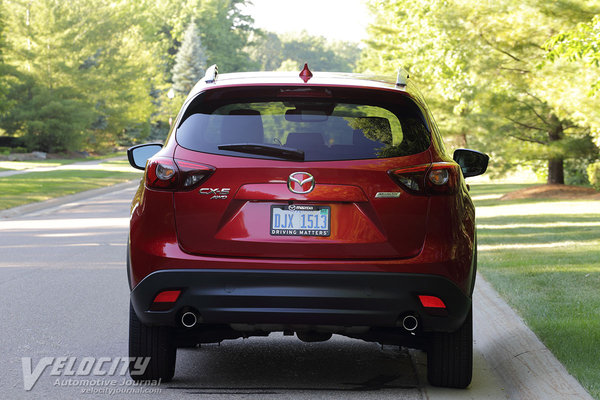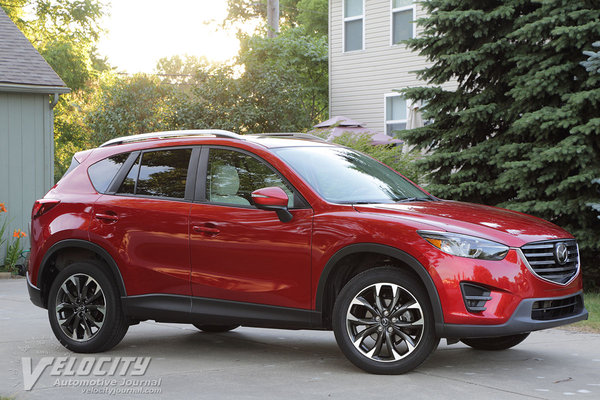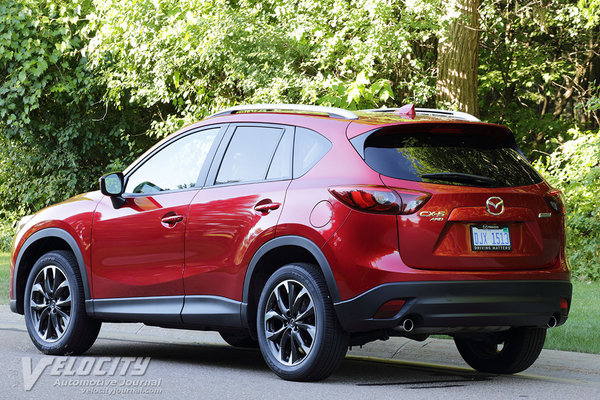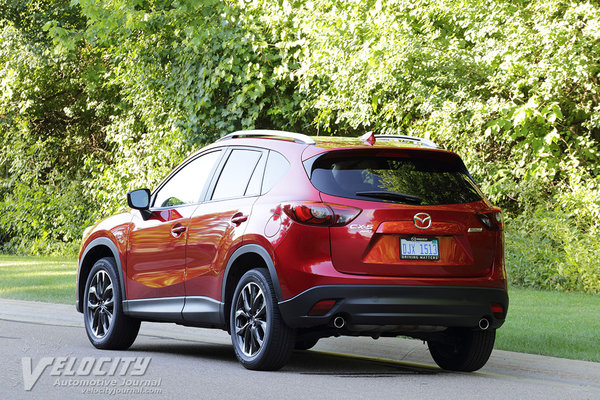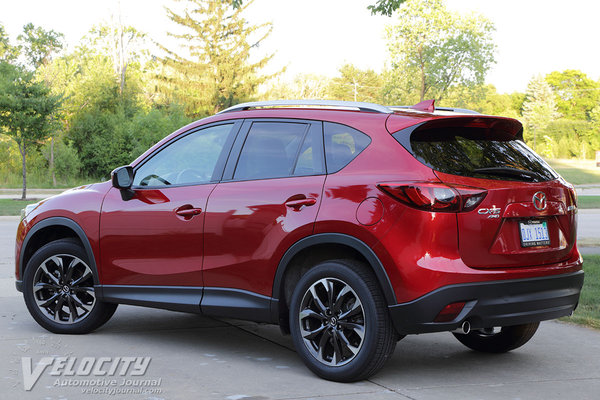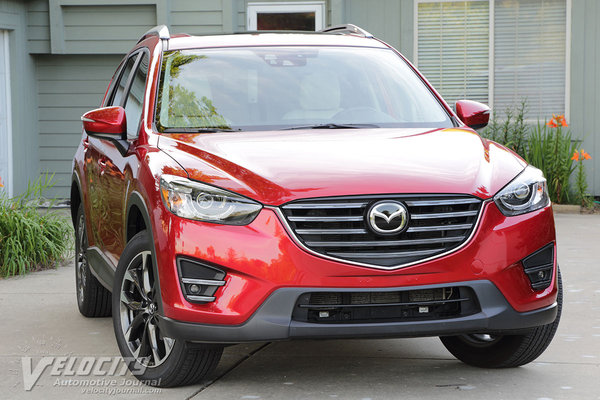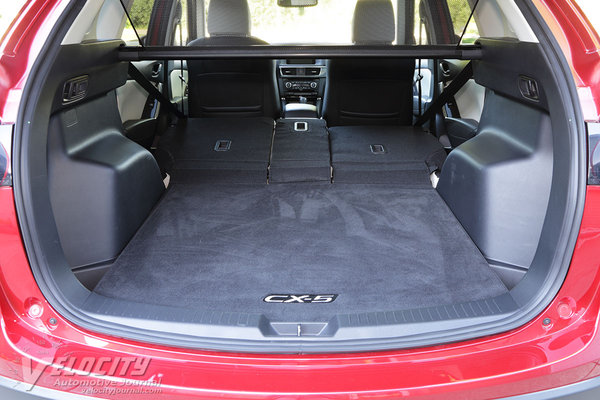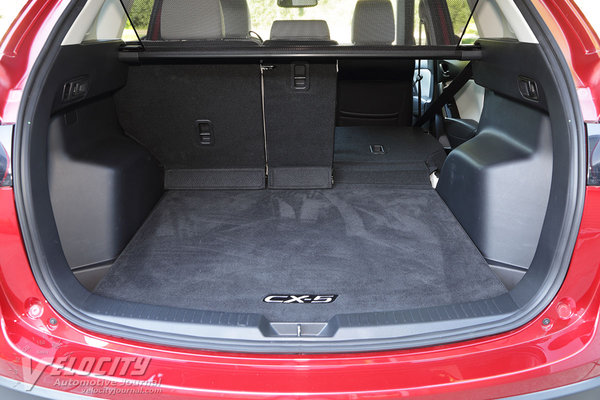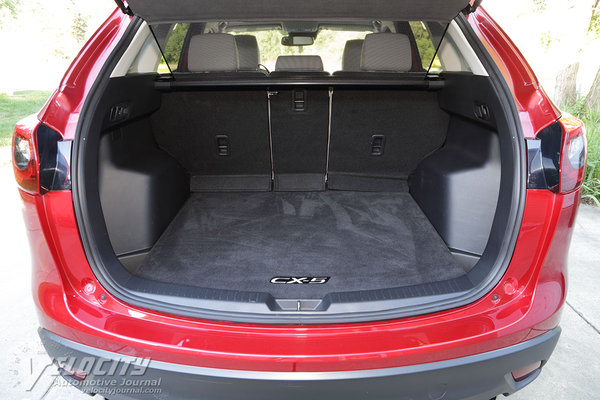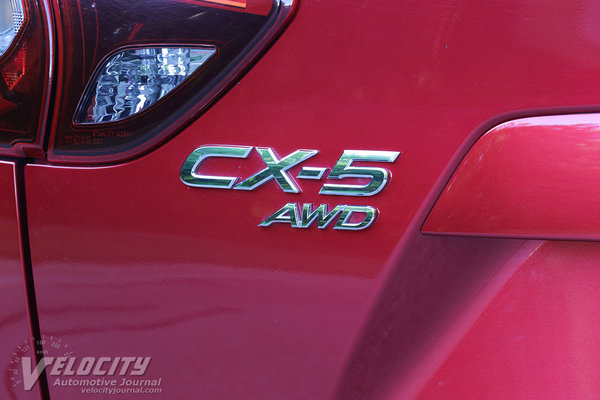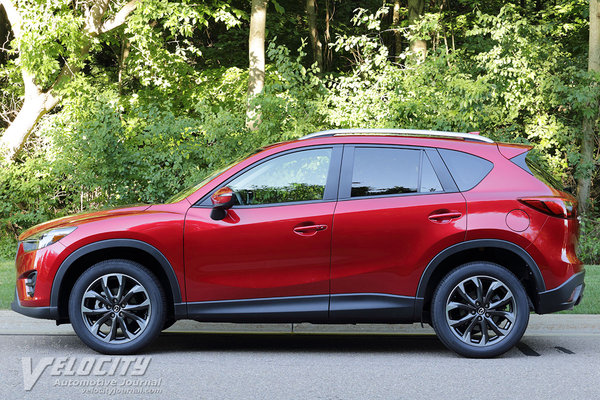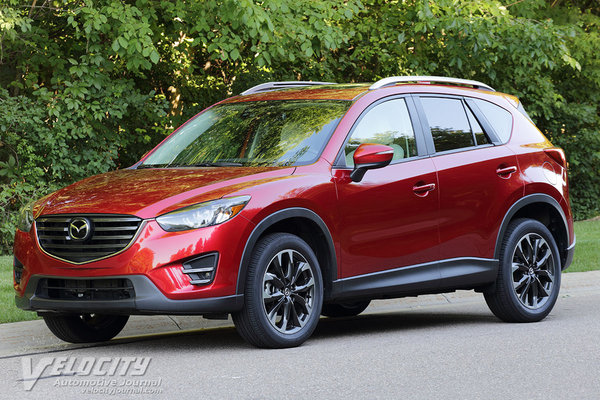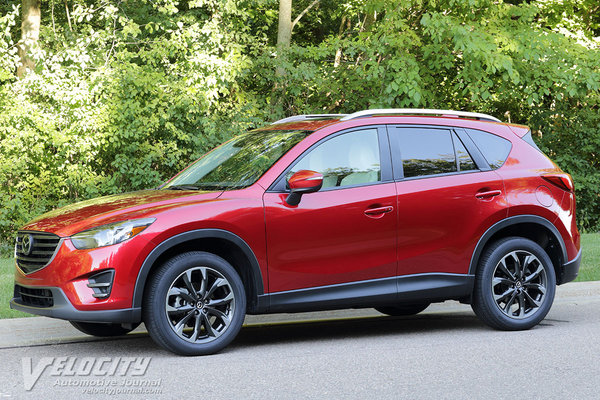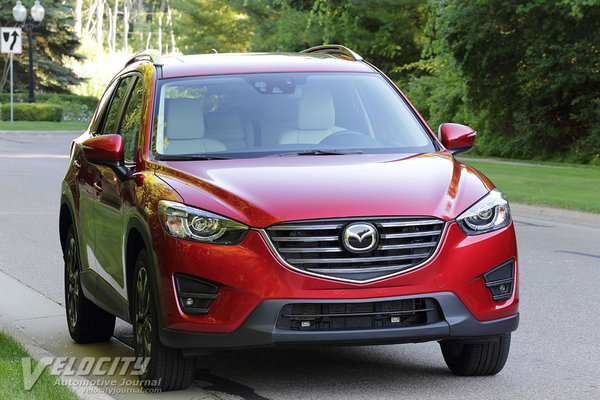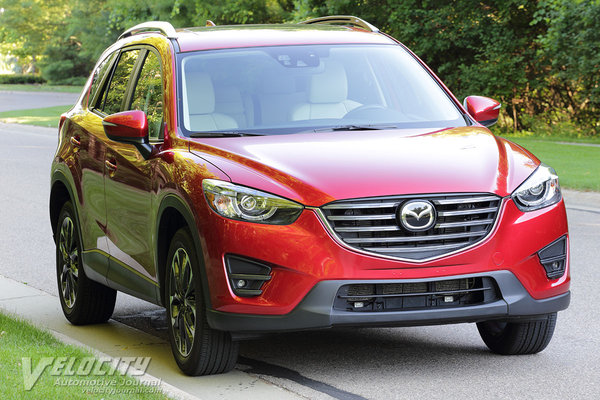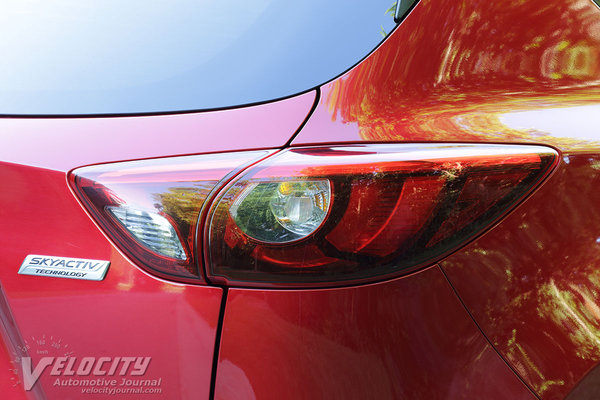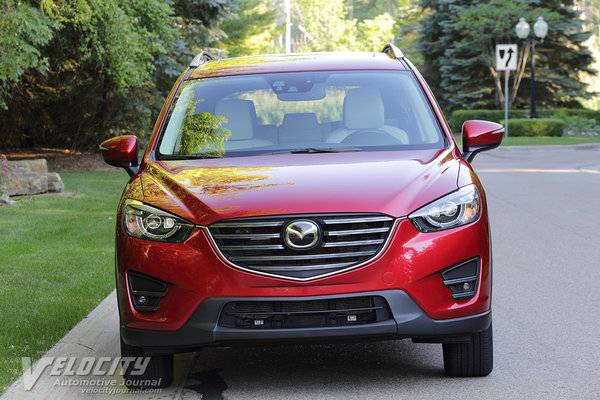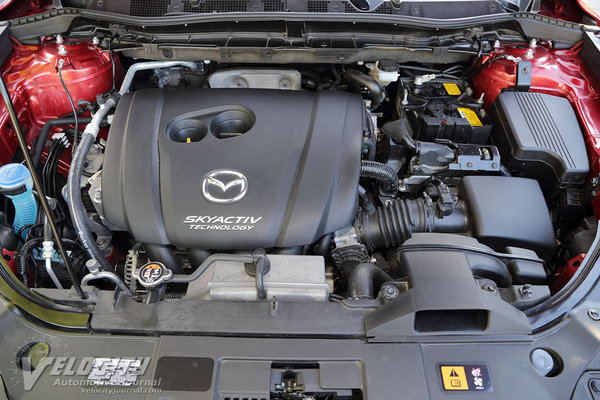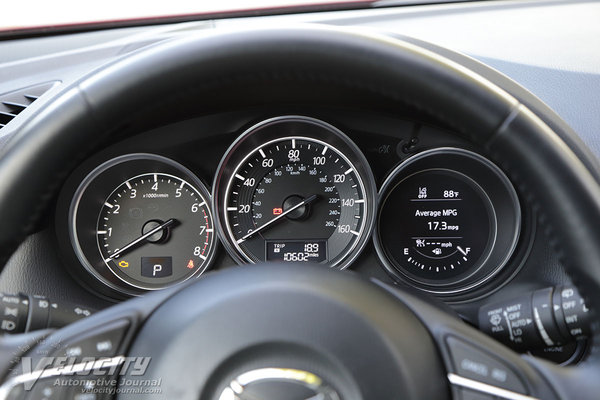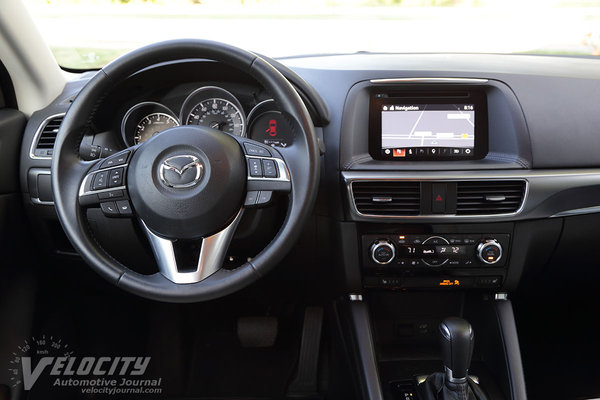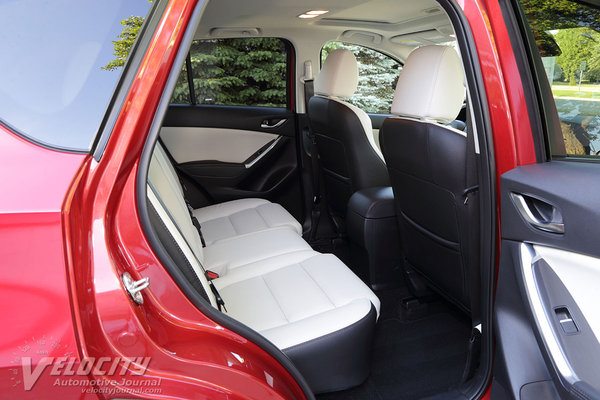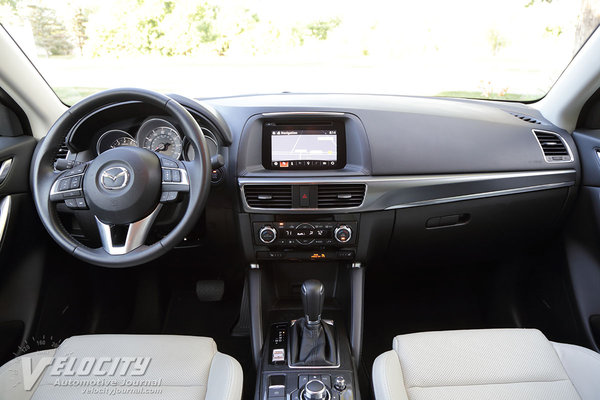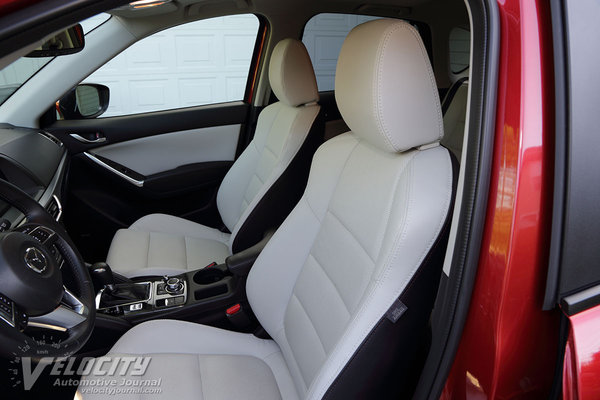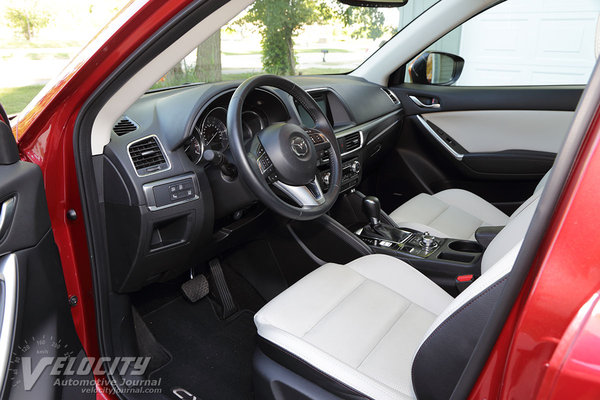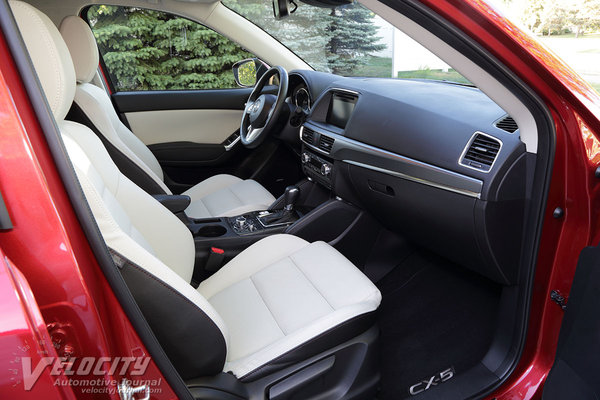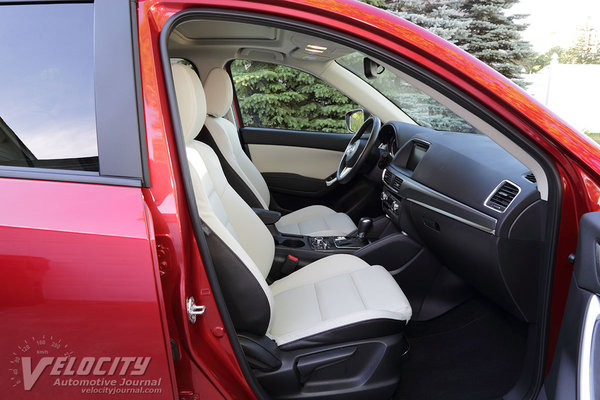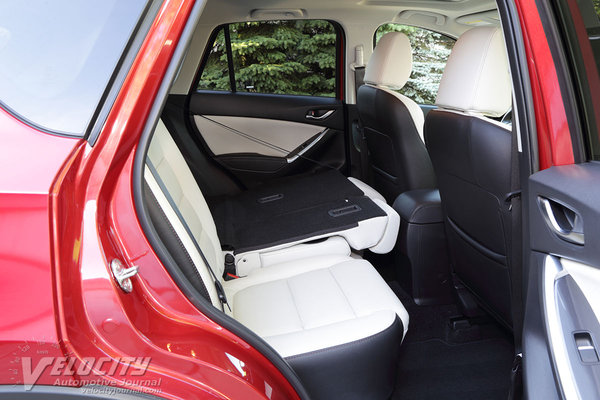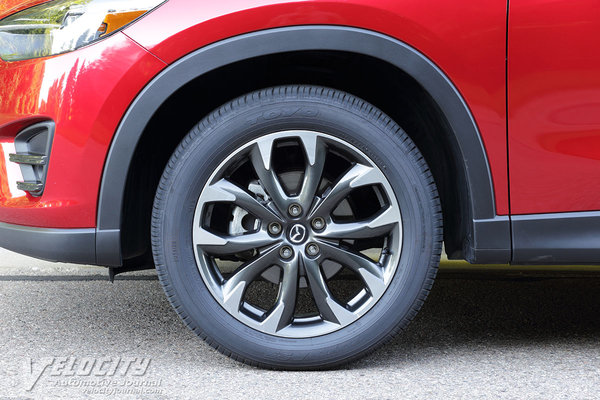2016 Mazda CX-5 Grand Touring AWD
08/10/2016
Shahed Hussain
Compact SUVs are one of the hottest vehicles in the automotive market, and Mazda's CX-5 is aimed at the heart of the segment. The CX-5 is in a competitive set that includes the CR-V, RAV4 and Escape, as well as with the Equinox, Rogue, and Forester.
Available in front-wheel drive or all-wheel drive, the CX-5 is can be equipped with a manual gearbox, but only when driving the front wheels. All-wheel drive models are equipped with a 6-speed automatic. Mazda offered a choice of a 2.0L and 2.5L inline fours for 2016 CX-5 models, but the 2.0L has been eliminated in 2016.5 models. Mazda priced the base 2016.5 CX-5 Sport starting at an affordable $21,795 (FWD) and climbing up to $29,570 for the Grand Touring AWD.
Our test vehicle was a 2016 Grand Touring AWD powered by the 2.5L and 6-speed automatic. Option packages include the Bose/moonroof package, Touring Tech package and i-Activesense package. Standard and optional equipment includes navigation, heated leather seats, moonroof, rearview camera, Bose audio system, Lane Departure Warning, and Radar Cruise Control. The MSRP of a similarly equipped 2016.5 CX-5 would total up to $32,425.
Mazda's interior stands out for its use of premium materials. While some of its competitors use plastic painted to resemble metallic trim, the CX-5 uses genuine satin aluminum throughout the cabin. The leather-wrapped steering wheel has integrated audio, phone and cruise control buttons. A central speedometer is flanked by a tachometer to the left and a trip computer display on the right. Instead of a coolant temperature gauge, a blue temperature light indicates cold coolant. An electronic fuel gauge is included in the trip computer display. The navigation and audio settings are controlled via rotary knobs and buttons on the center console. An electronic parking brake frees up space for an additional storage bin. Dual-zone climate controls and the seat heater settings are on the center stack. A USB input in the console bin connects to the audio system or recharges portable electronics.
Supple perforated leather covers the heated front seats, which are bolstered to keep occupants securely in place. The driver's seat has 8-way power settings, while the front passenger gets 6-way manual adjustments. Front headroom is adequate for occupants up to 6 ft. tall, even with the optional sunroof. Rear passengers are rewarded with ample legroom and headroom for 6 ft. tall occupants. The center seating position suffers from a hard seatback due to the folding armrest. Both rear seats fold down to extend a flat load floor.
As with most other compact SUVs, the CX-5 has MacPherson strut front suspension with a stabilizer bar. At the rear is a multilink setup with coil springs, dampers and a stabilizer bar. The electrically-assisted rack-and-pinion steering system has a relatively quick 2.7 turns lock-to-lock. Disc brakes are at all four wheels with ABS, Dynamic Stability Control (DSC), traction control, and Hill Launch Assist standard. Only the Grand Touring model gets 19-inch diameter alloy wheels with Toyo P225/55R19 all-season tires; 17-inch diameter wheels shod with P225/65R17 tires are standard on the Sport and Touring models. Curb weight ranges from 3,212 lbs. for a front-drive CX-5 up to 3,589 lbs. for an all-wheel drive Grand Touring with the automatic transmission.
Mazda's all-aluminum SKYACTIV-G engines are thoroughly modern designs with dual overhead-cams variable valve-timing and direct injection. The 2.5L inline-4 is rated at 184-bhp @ 5,700 RPM and 185 lb.-ft. @ 3,250 RPM. Mated to the inline-4 is a six-speed automatic with overdrive ratios in fifth (0.708:1) and sixth (0.599:1). A 4.624:1 final drive ratio sends power to front wheels or all four wheels via an active torque-split coupling. EPA fuel consumption with AWD is an estimated 24/30 MPG (city/hwy.). We averaged 25-26 MPG is mixed urban and highway driving.
Mazda aims to be a sporty alternative to other mainstream brands, but the CX-5 drives like most other compact SUVs: competent but unexciting. Full throttle acceleration from a stop results in minimal torque steer, a quick tug at the steering wheel precedes torque transfer to the rear axle. Instead of spinning its front wheels, the CX-5 accelerates smoothly as the AWD system distributes torque to the rear wheels.
To extract maximum fuel efficiency, the 6-speed automatic upshifts as early as possible, resulting in leisurely acceleration. A toggle switch next to the shift lever engages the Sport mode, which upshifts at higher RPM for faster acceleration, and downshifts at less than full throttle for quicker passing. Alternately, the manual shift mode allows the driver to control shift points, but we found that Sport mode provided acceptable acceleration for highway merging or in city traffic. The overdrive sixth gear keeps engine noise from intruding into the passenger compartment at highway speeds, but at full throttle, the inline-4 becomes significantly louder, especially as revs rise above 4,000 RPM.
It's difficult to tune a compact SUV chassis to approach a comparable compact or midsize car, even when both vehicles share a similar platform. It seems that Mazda engineers realized that most SUV customers are not interested in clipping apexes and zipping through traffic. So instead of stiff springs and firm dampers to emulate a sport sedan, the CX-5 is tuned for a more relaxed, compliant ride. We did notice that the 19-inch wheels and low profile tires could not adequately isolate the passenger cabin from poorly maintained highways surfaces. As expected, moderate body roll and understeer removed any illusions of sporty handling. On the highway, the CX-5 required more steering correction than expected to maintain lane position. A combination of the soft suspension tuning and the vague feedback from the Toyo tires restricted us to about 80 MPH. Tire noise is noticeable at highway speeds, but wind noise is minimal. The Mazda's all-disc brakes ensured sure-footed stopping power, but the soft suspension tuning permits the CX-5 to nosedive under hard braking.
In the expanding compact SUV segment, Mazda needs the CX-5 to grab its share of the market from its larger rivals. However, because nearly every manufacturer has a small SUV, the CX-5 is hard-pressed to distinguish itself from the crowd. For customers willing to consider alternatives beyond the most popular compact SUVs, we think the CX-5 offers an appealing combination of stylish interior design and decent value.

